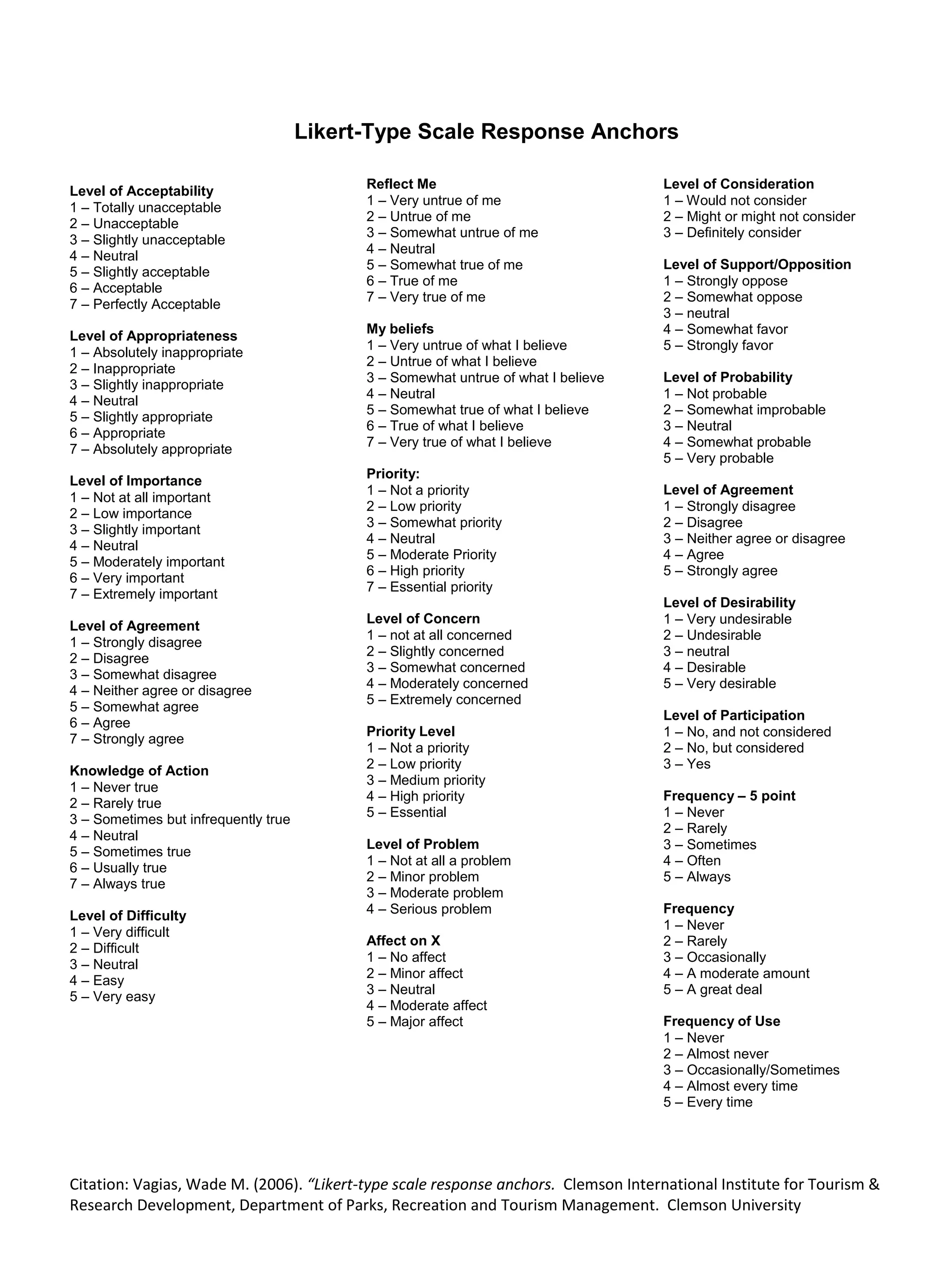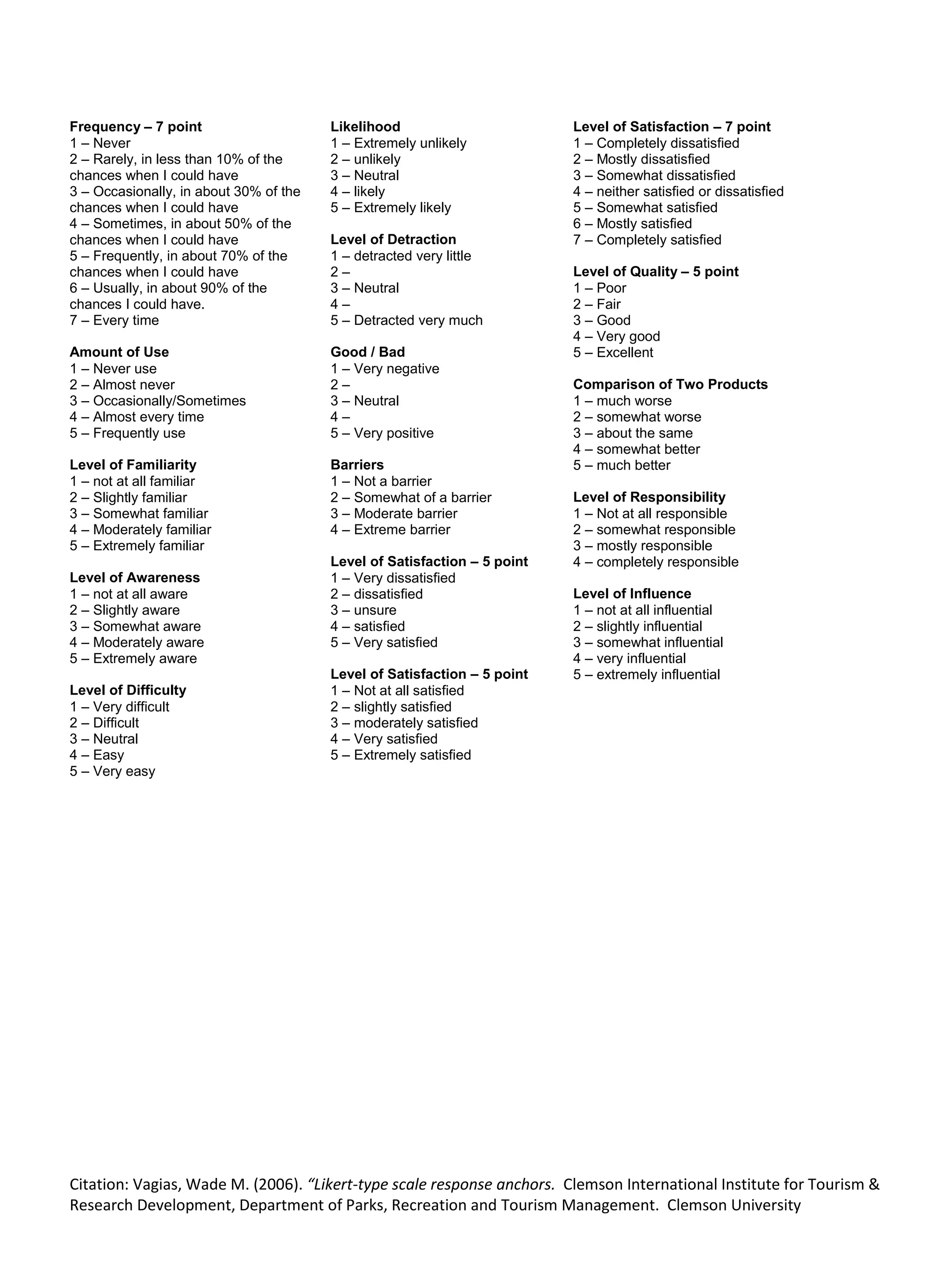The document outlines different types of Likert scale response anchors commonly used to measure levels or degrees of concepts. It provides examples of 7-point and 5-point scales measuring concepts like acceptability, importance, agreement, satisfaction, difficulty, priority, and more. The scales typically range from extremes like "strongly disagree" to "strongly agree" or "not at all" to "extremely" to capture different levels of the concept being measured.

